
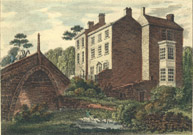
Dukinfield Bridge
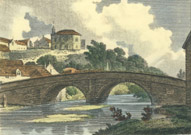
Stayley Bridge
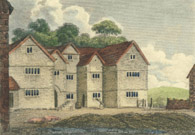
Stayley Hall
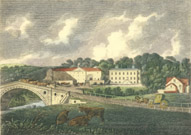
Hyde Hall - Hyde
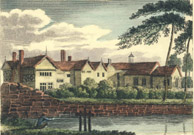
Dukinfield Hall
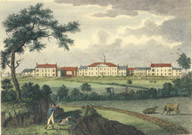
Fairfield Moravian Settlement
 |
 Dukinfield Bridge |
 Stayley Bridge |
 Stayley Hall |
 Hyde Hall - Hyde |
 Dukinfield Hall |
 Fairfield Moravian Settlement |

|
Catherine Emslie Anderson MBCatherine Emslie Anderson MB was born on 26 December 1881 in Maskiliye, Ceylon, the daughter of a tea planter, James Anderson, and his wife Isabella Craib. It was from her mother’s side of the family where, perhaps, Catherine developed an interest in medicine, as her uncle James Craib was a colonial surgeon in Ceylon. Just five years before Catherine Anderson was born, Parliament, in Britain, passed an act to remove restrictions on granting medical qualifications on the grounds of gender. Taking advantage of this fairly new law Catherine went to Aberdeen to study and take her degree in medicine, passing and qualifying in 1904. In 1909, after the resignation of Dr AM Rolls, Assistance House Surgeon at Ashton General Hospital (Infirmary), the Board of Governors met to consider his replacement. After applications were received, the Governors decided to ask two of the applicants to appear before the weekly committee so a decision could be made on the placement. After examining her testimonials and after her attending an interview, the Board duly appointed Catherine E Anderson as Junior House Surgeon for six months at a salary equal to Ł90.00 per annum, with board residence and subject to conditions to take up the duties as soon as possible. She was the first woman to be appointed there in that capacity. It is apparent that the appointment of a female doctor presented the Board with a few practical problems. It decided to utilize the hospital library as a suitable sitting room for her and to find suitable furniture for both sitting room and bedroom. When Dr Anderson wrote to say she could commence her duties on 10 July, Matron was asked to see to the library as a proposed sitting room and to have the bedroom made ready. After twelve months had elapsed, Dr Anderson applied for and was granted an increase in salary to the sum of Ł100.00 per annum. The board took this decision after hearing Dr Hamilton speak in complimentary terms about her work. On 17 August 1910 the Board had an interview with the Matron, Miss Cooper, on the matter of a dispute she had with the Senior House Surgeon over her authority with the nursing staff. This dispute brought about claims and counter-claims on each party’s behaviour which involved Dr Anderson. The result of this appears to have provoked bad feelings between the Matron and Dr Anderson to such an extent that they were asked to appear before the Board on 14 September and each given the opportunity of speaking. The end result was that they were informed by the Chairman, ‘that the Board insisted on them working together officially and that the present state of affairs could not be tolerated‘. On 5 April 1911 Dr Anderson requested leave of absence for three days in order to visit London relative to another appointment. On 3 May 1911 Dr Anderson wrote to the Board to say she wished to resign her post as she had obtained the Government’s appointment of residential officer of the Lady Havelock Hospital for Women and Children at Colombo, Ceylon. The Board reluctantly accepted Dr Anderson’s resignation and gave her their good wishes and congratulations on her appointment. Whatever had taken place at the hospital between Dr Anderson and the Matron did not deter the Board from replacing Dr Anderson with another female doctor, perhaps a testimonial to her work. From the hospital she moved to Liverpool to study at the Department of Tropical Medicine, where she obtained a Diploma in Tropical Medicine. She then went to work as a Medical Officer for the Colonial Medical Service at the Lady Havelock for Women hospital and the Lady Ridgeway for Children hospital. She was also lecturer in diseases of children at Ceylon Medical College. During the First World War, Catherine worked at the Scottish Women’s Hospitals in Salonika and Corsica and her name is on the Roll of Service at Aberdeen University. Dr Elsie Inglis had helped set up the Scottish Women’s Hospitals at the outbreak of the First World War for the Foreign Service Committee to help support the war effort. This organisation was staffed almost entirely by women and set up fourteen field hospitals to treat the wounded in France, Serbia and Russia. In 1921, Catherine took a degree of FRCS at Edinburgh and a mention of her working at the Lady Havelock Hospital in Ceylon is to be found in the British Medical Journal dated 1 July 1922, in an article on Hook Worms. She was, by then, the Medical Superintendent of the Lady Ridgeway Hospital for Children and the Lady Havelock Hospital for Women. She is on an Incoming Passenger Report in 1933, having embarked at Durban, South Africa, and disembarked at London, with permanent residence given as Ceylon and details of proposed address in UK as Taprobank, Aboyne, Scotland. The account supplied by Aberdeen University states that she died suddenly at sea in the closing days of January 1934 on board the SS Strathnaver en route for Ceylon. In an account given by the granddaughter of her cousin, Lizzie Craib, Catherine fell ill and was diagnosed as having cancer. She booked a cruise to Ceylon and ‘went missing at sea’ on 12 January 1934. A sad ending for a lady who appears never to have married and devoted her life to her chosen profession of medicine. Valerie Bowker BA Hons. Sources Websites: archive.org 1911 Census of England and Wales |
News
|
|||||||||||||||||||||
About Us | Recent Work | Our Members | Upcoming Events | Join Us | Contact Us | Links